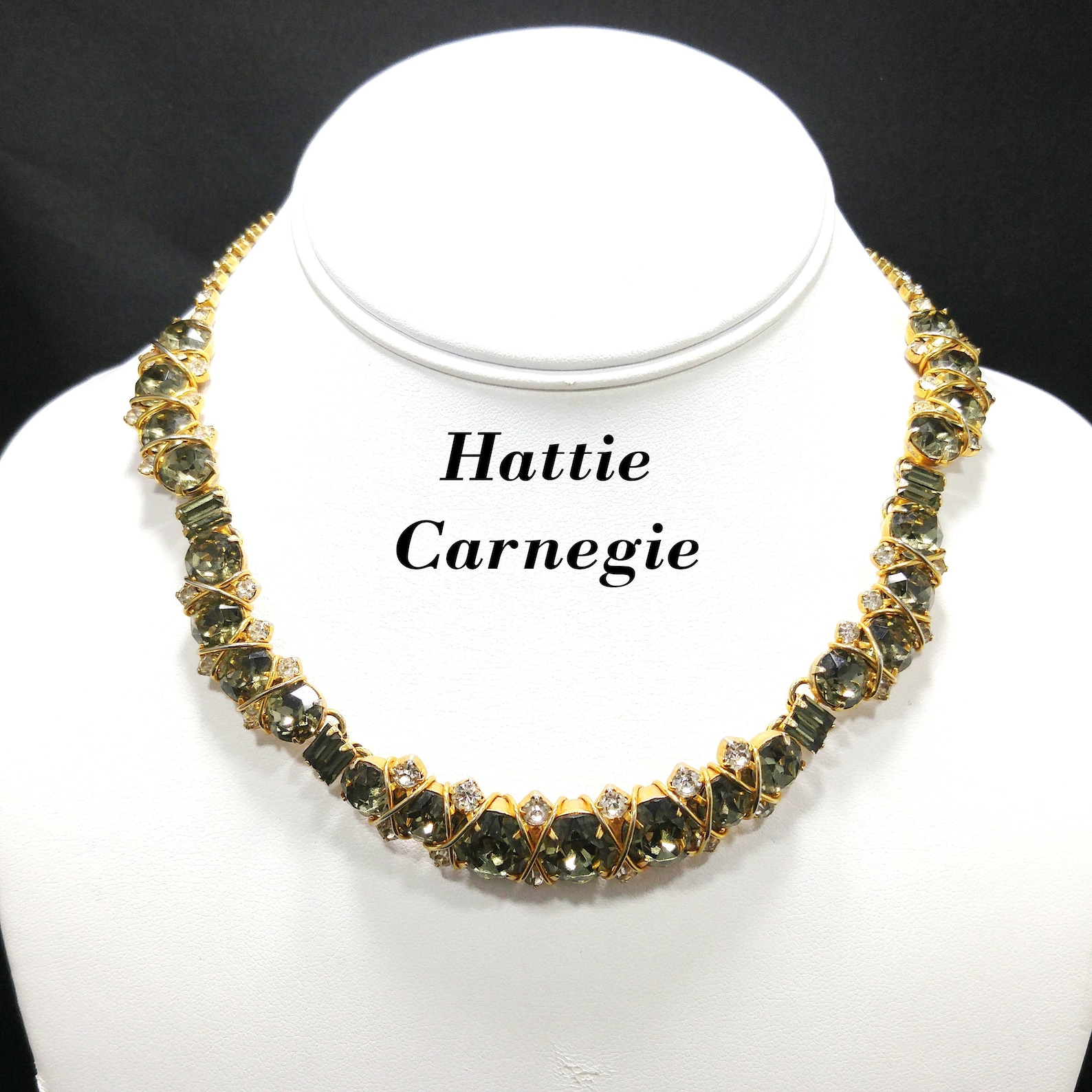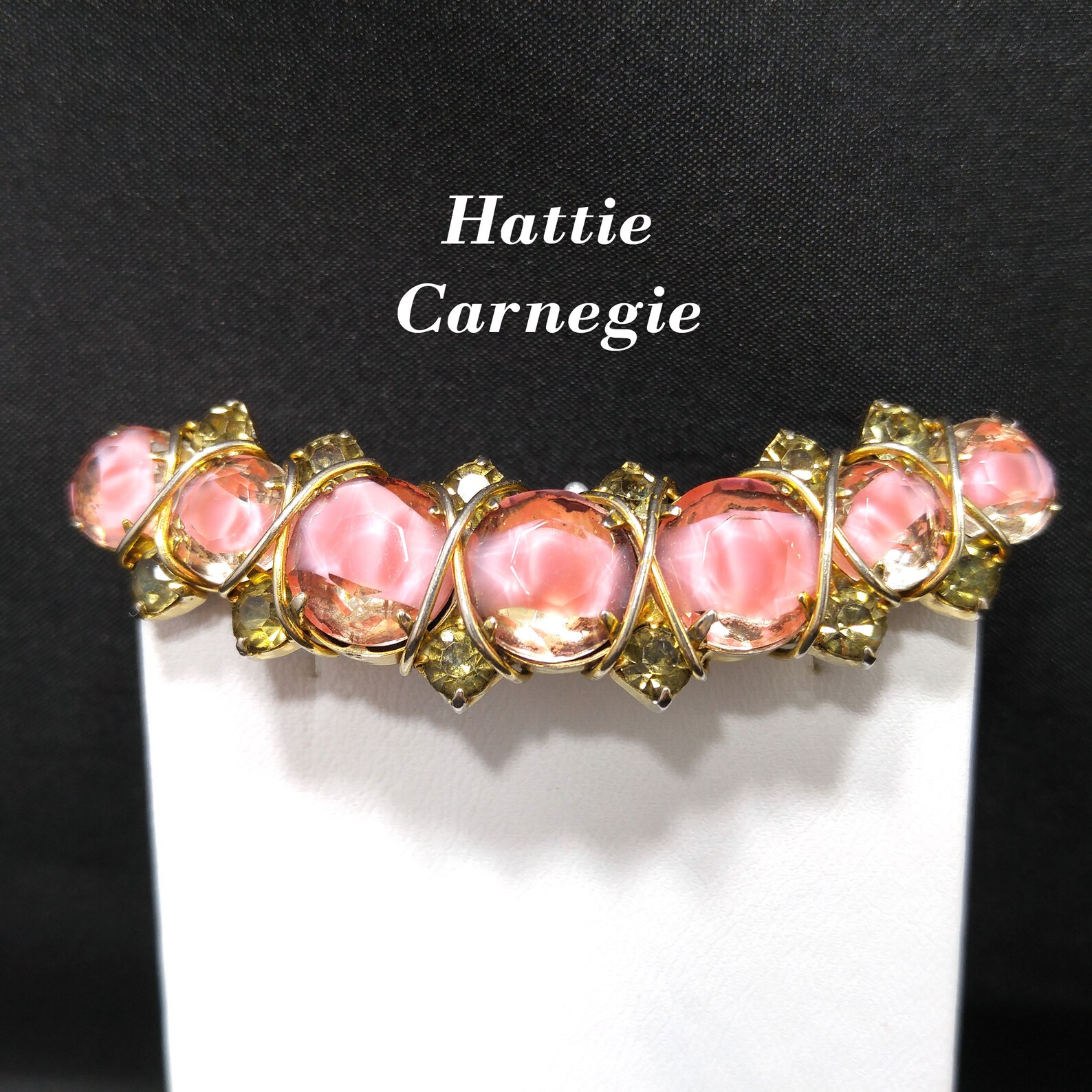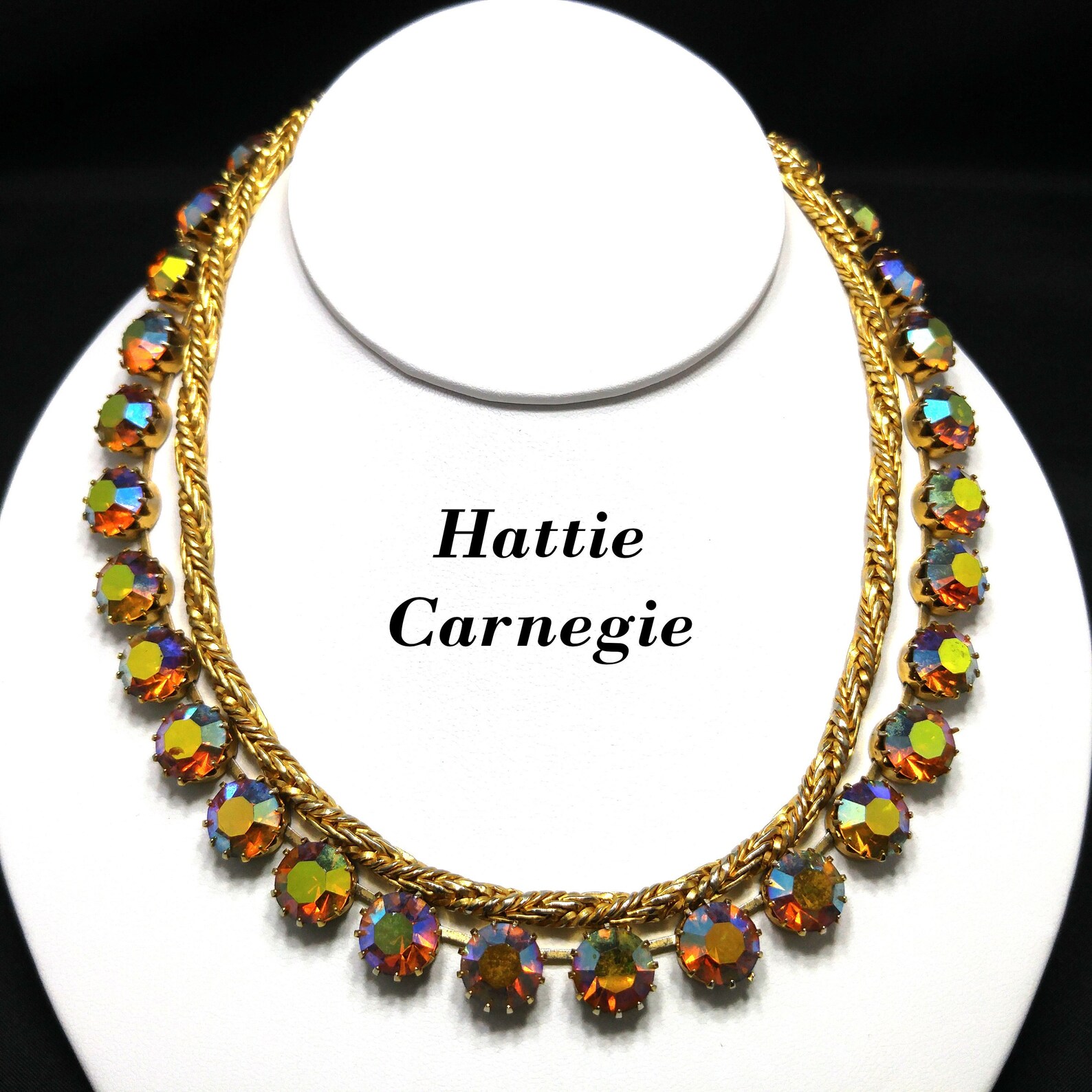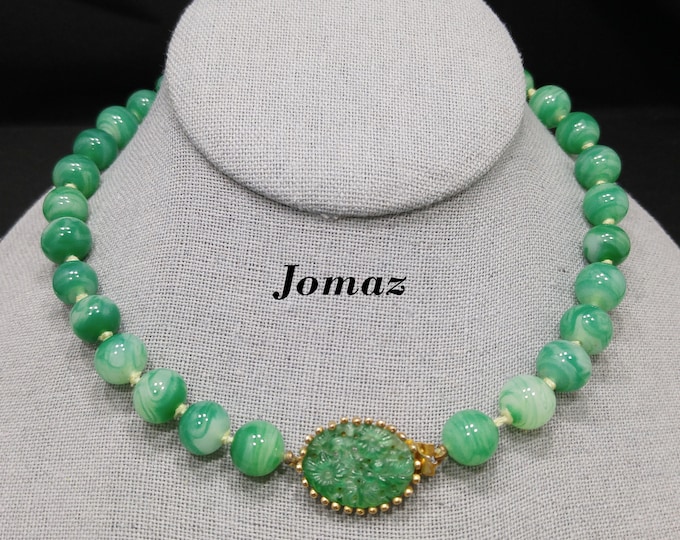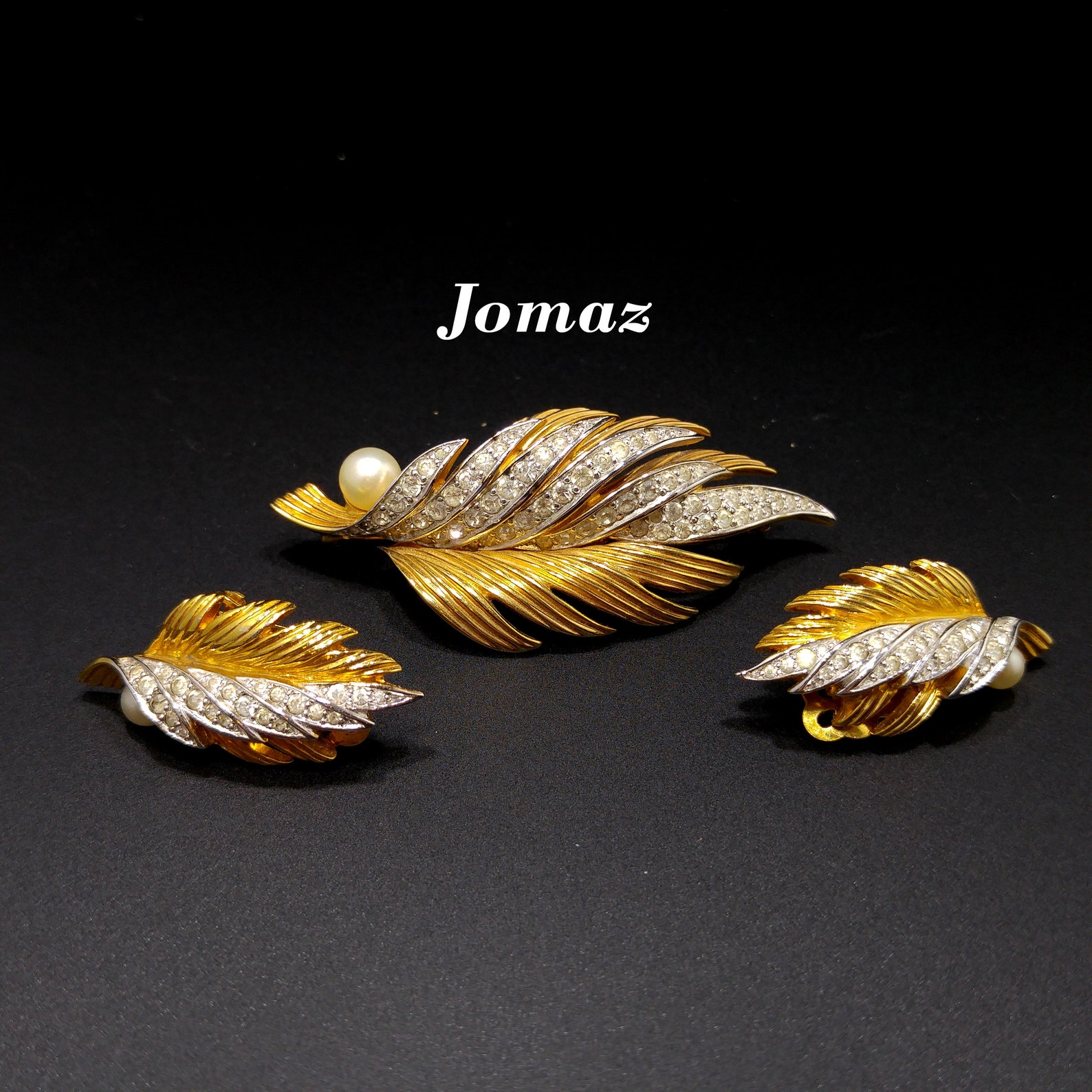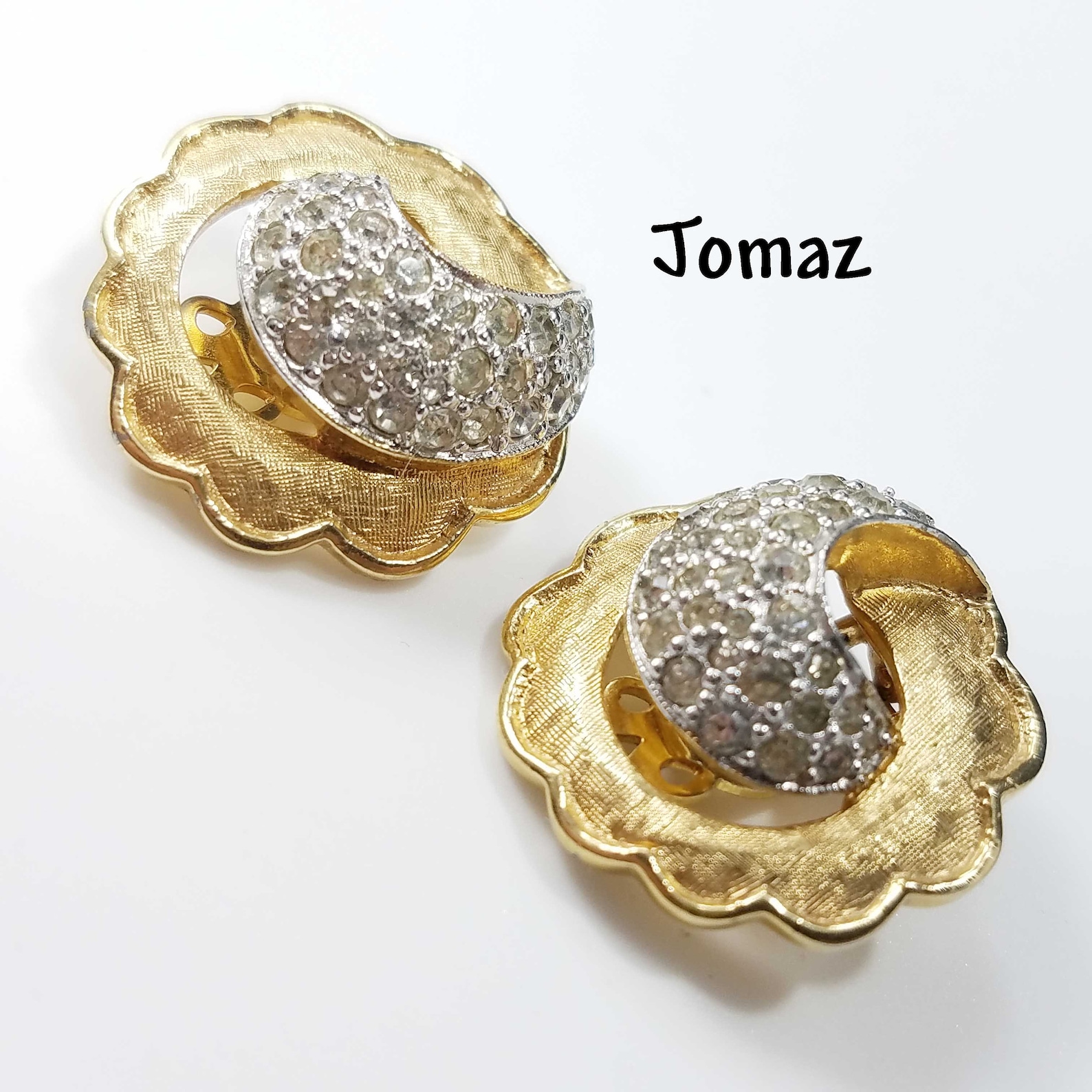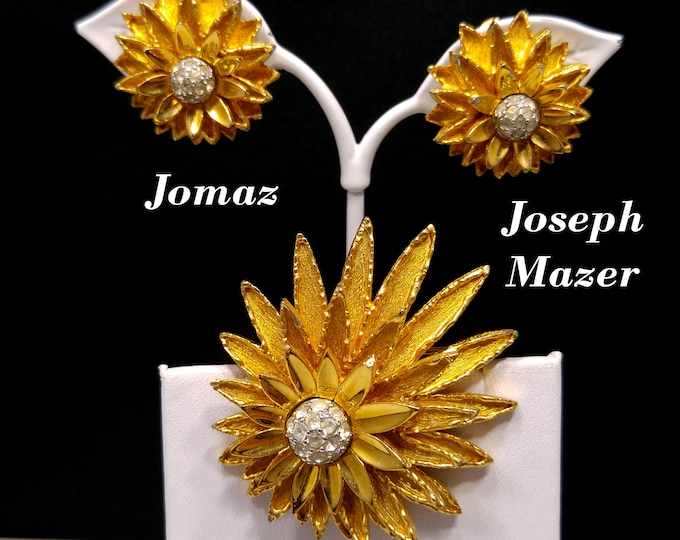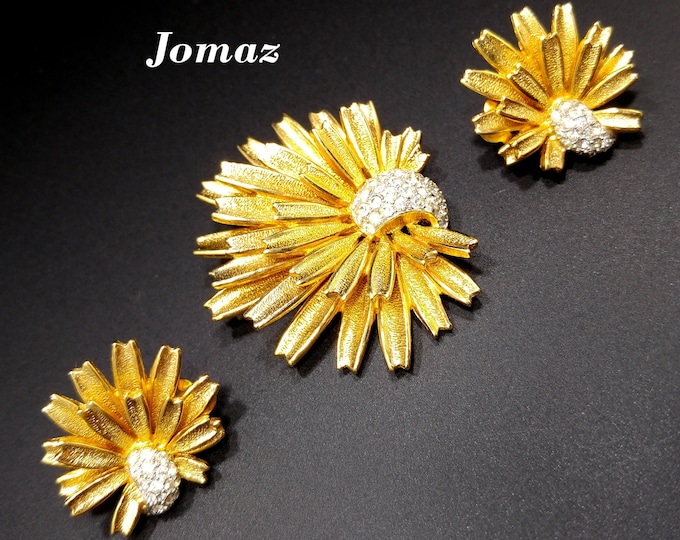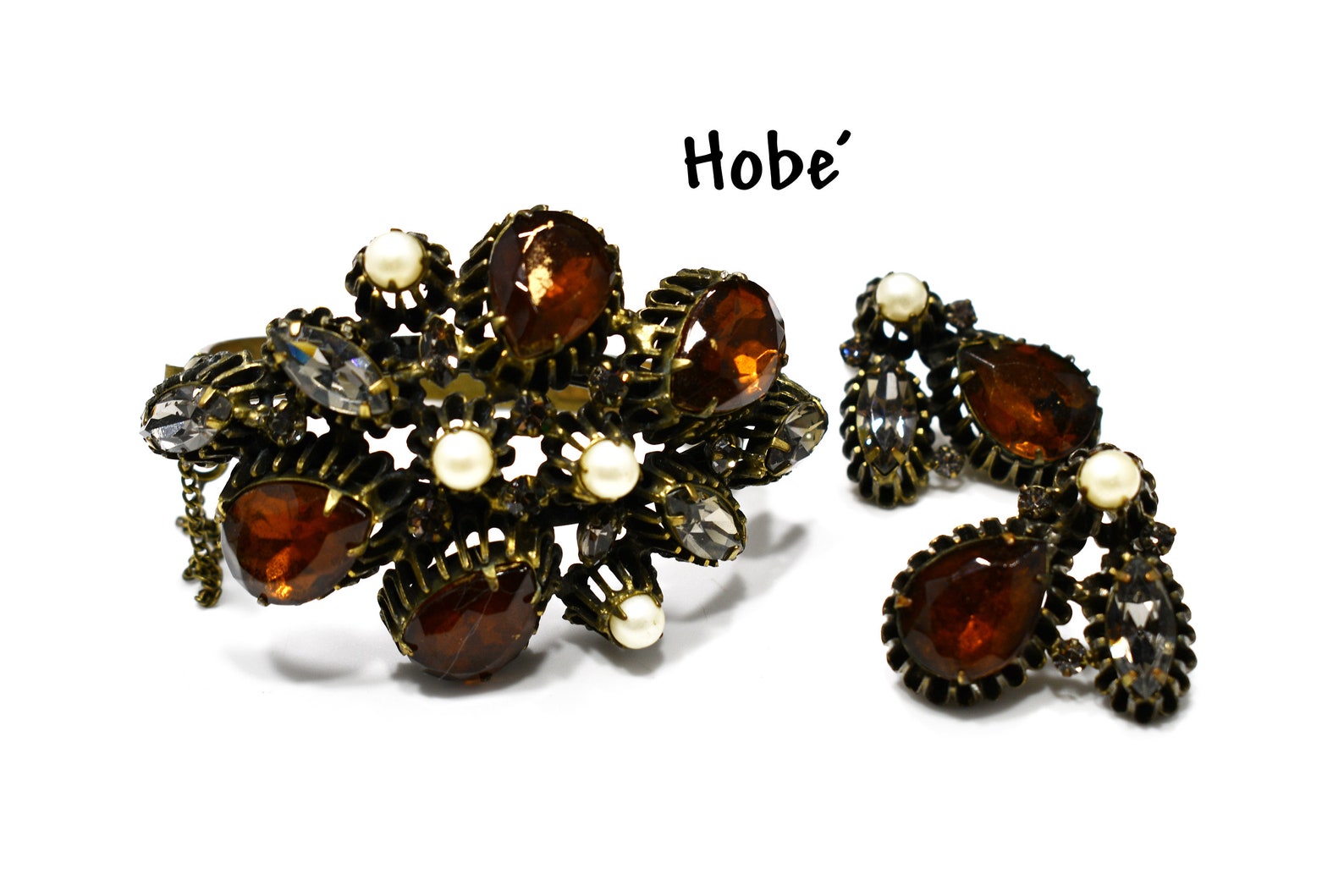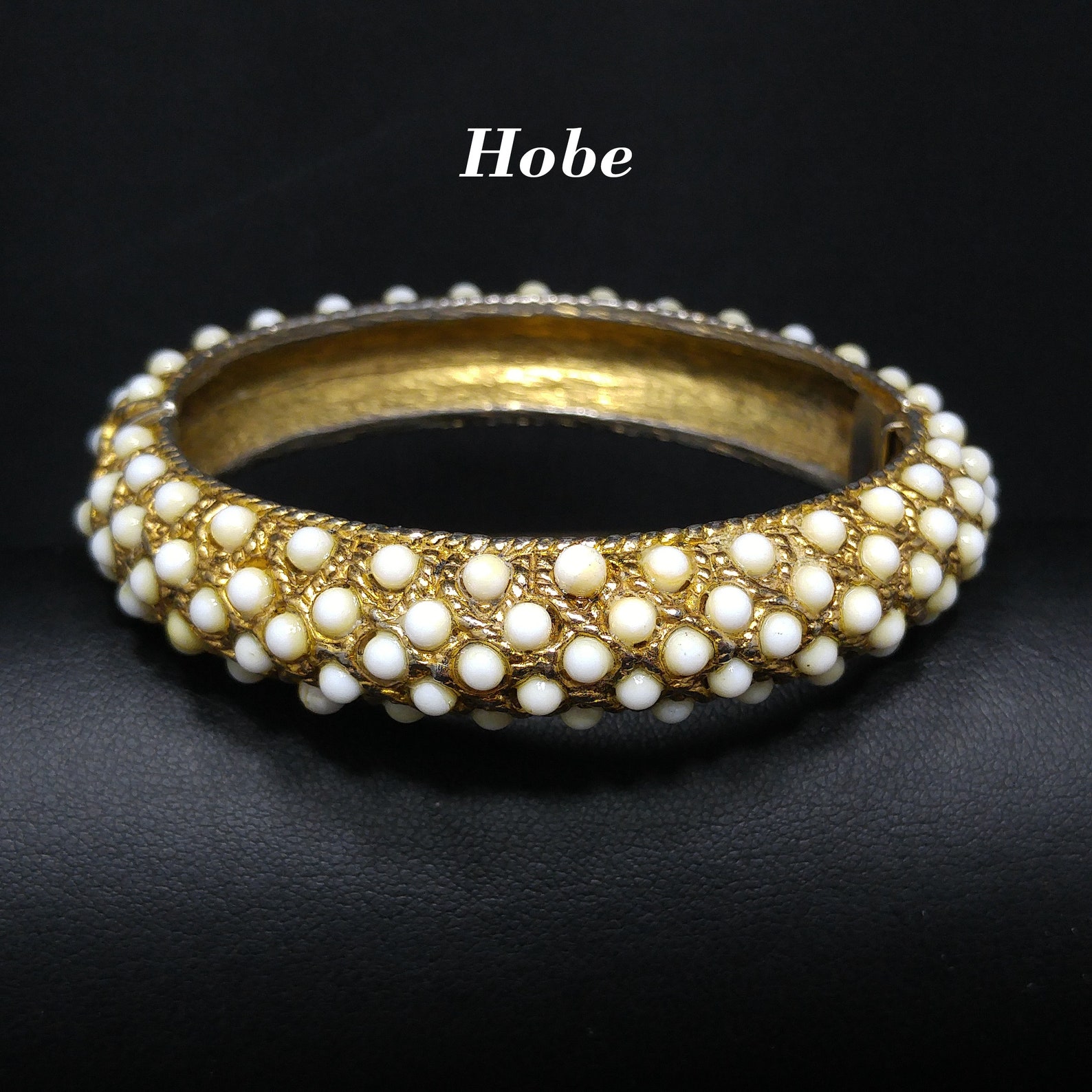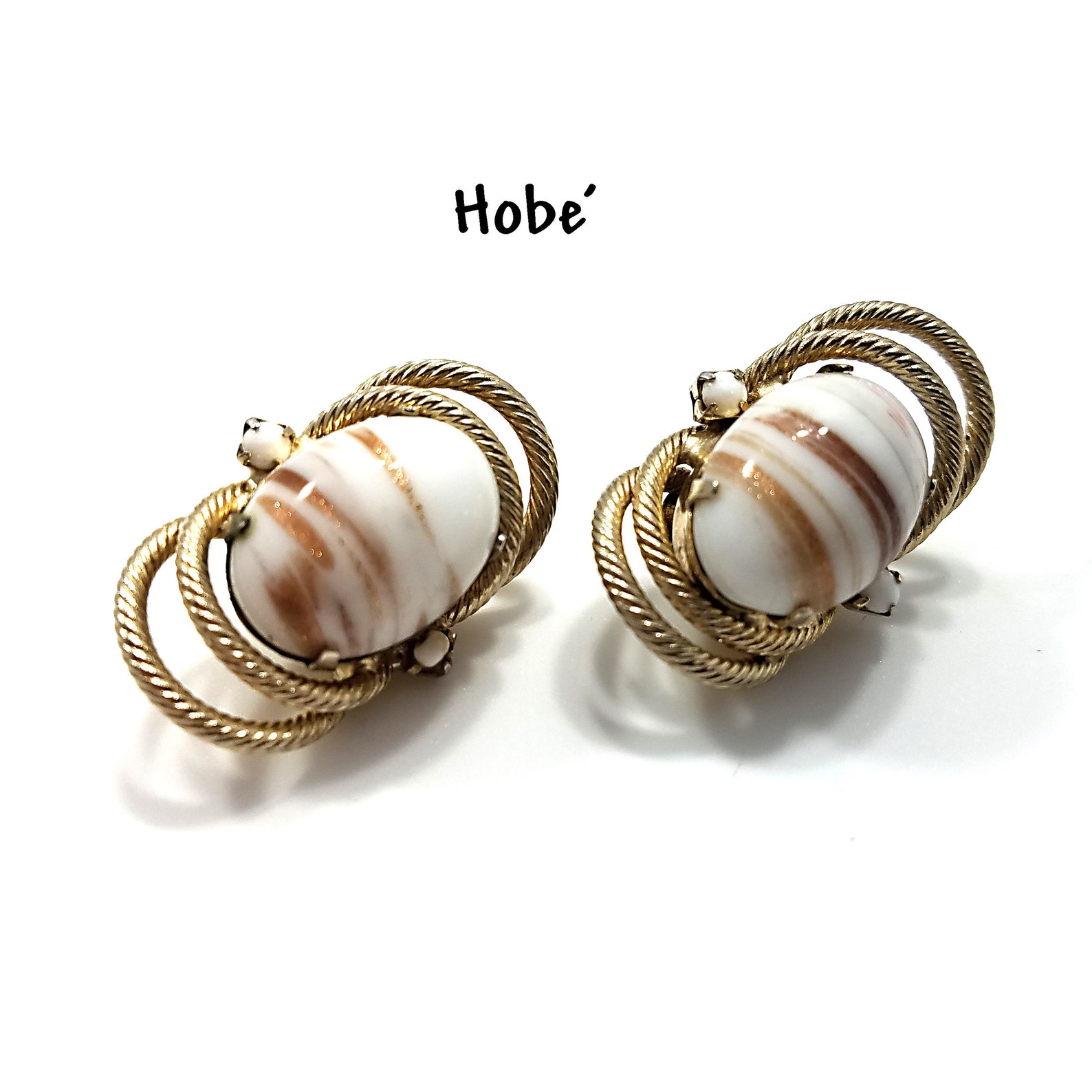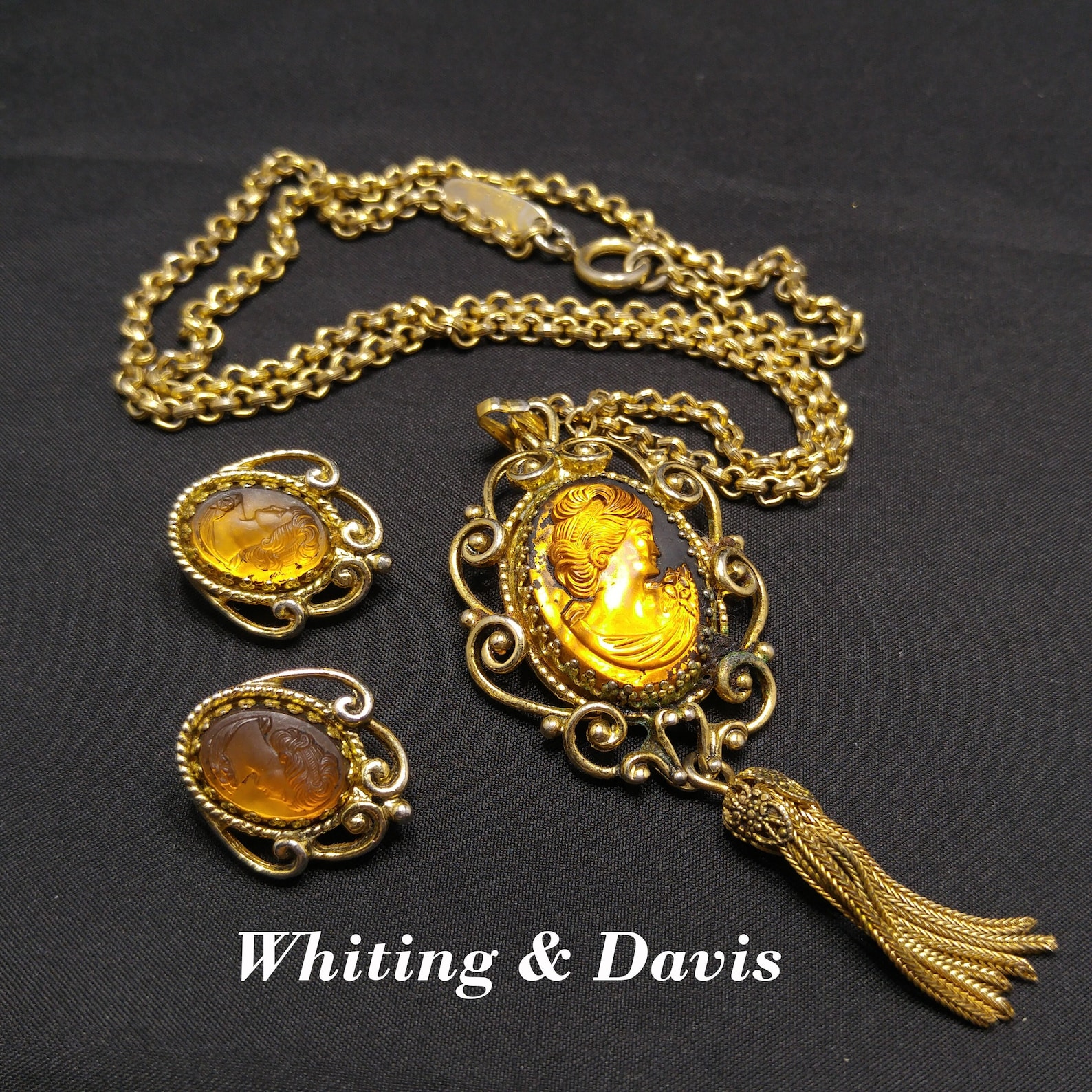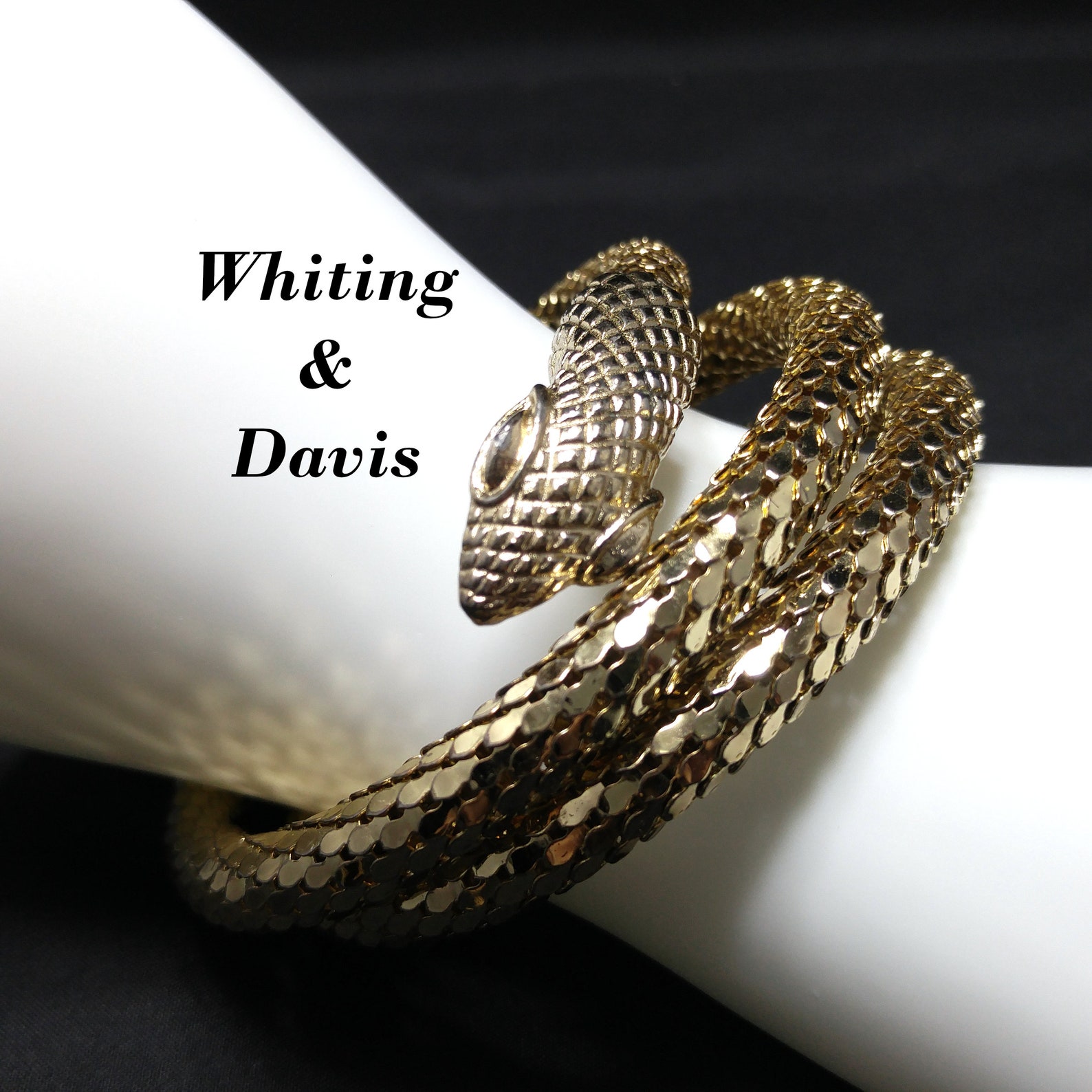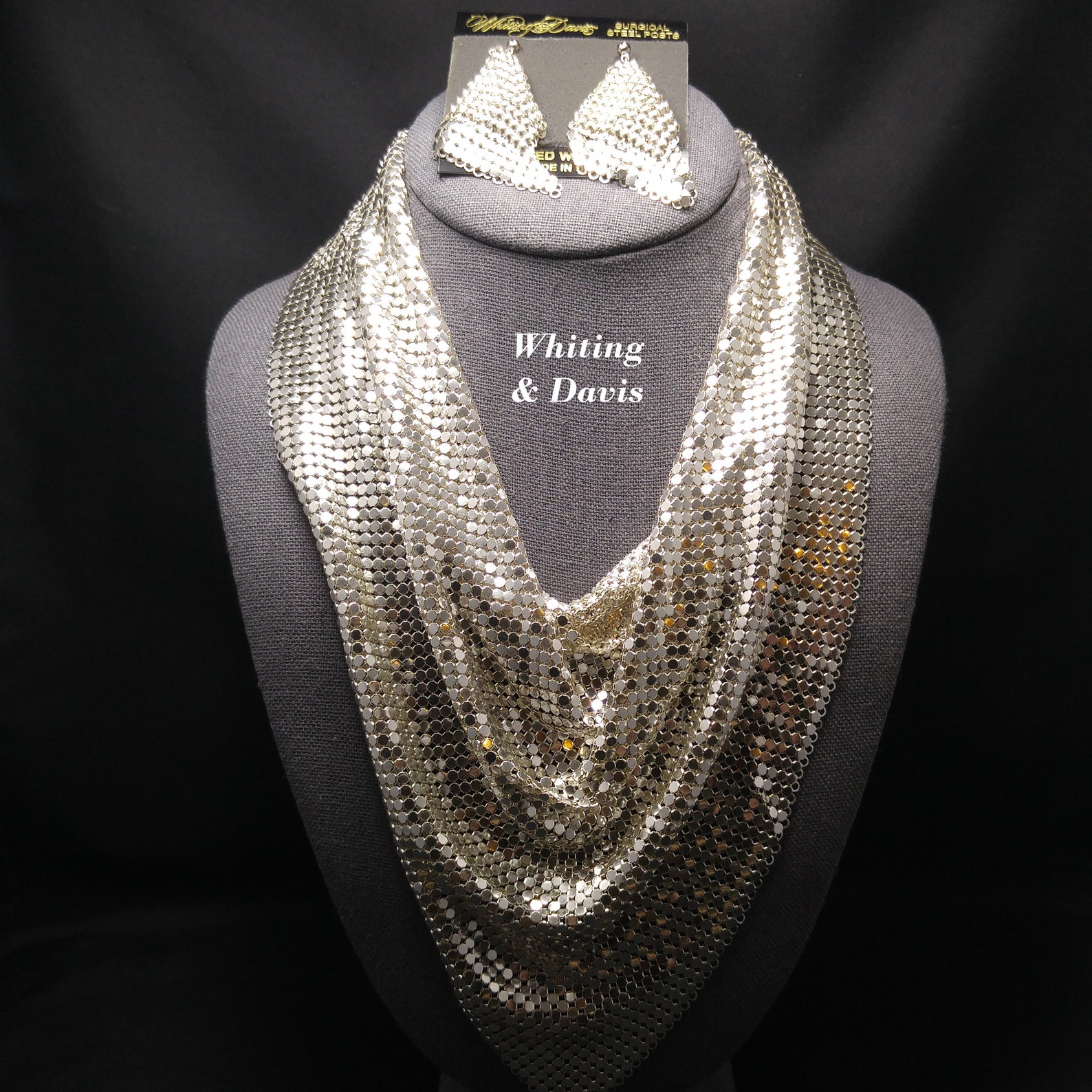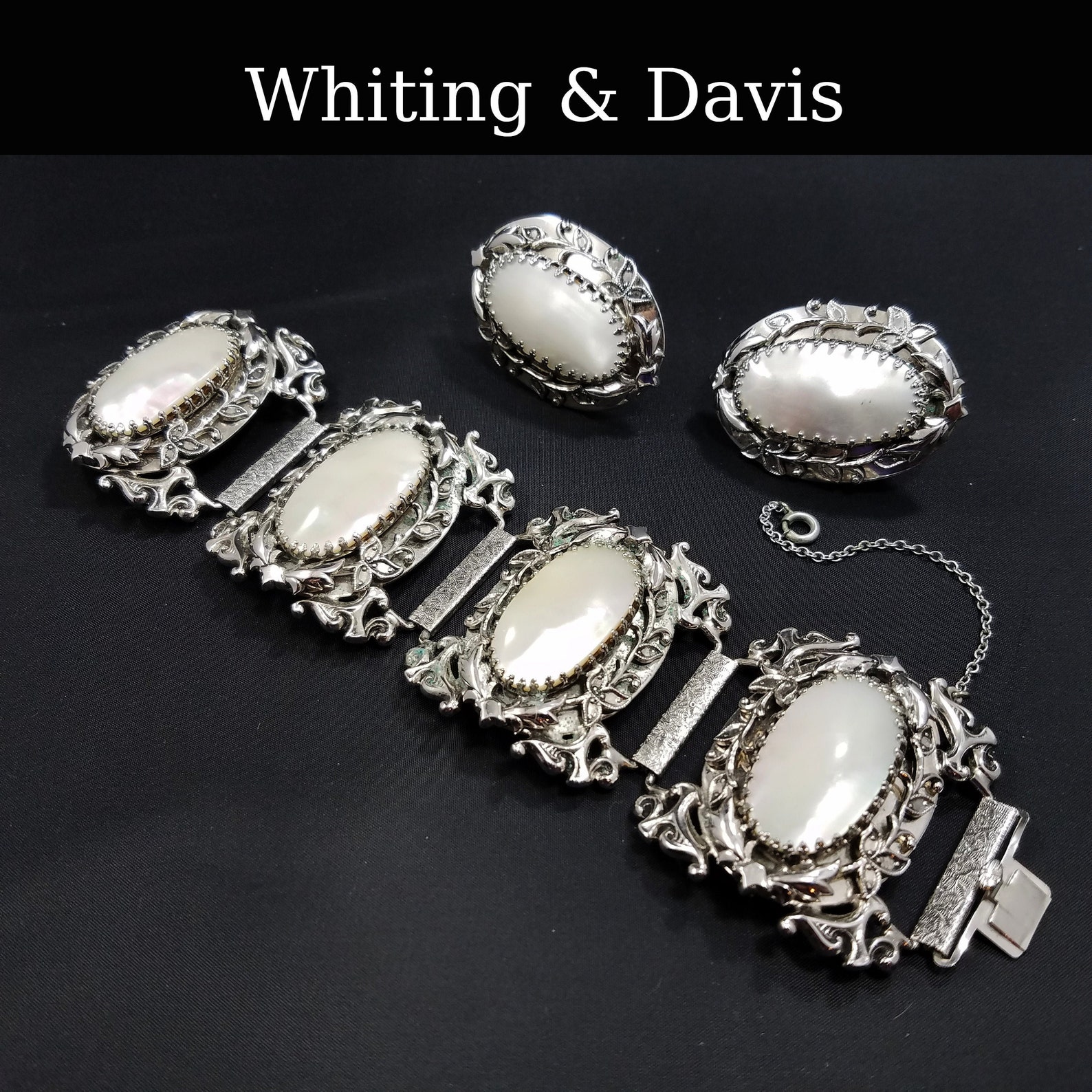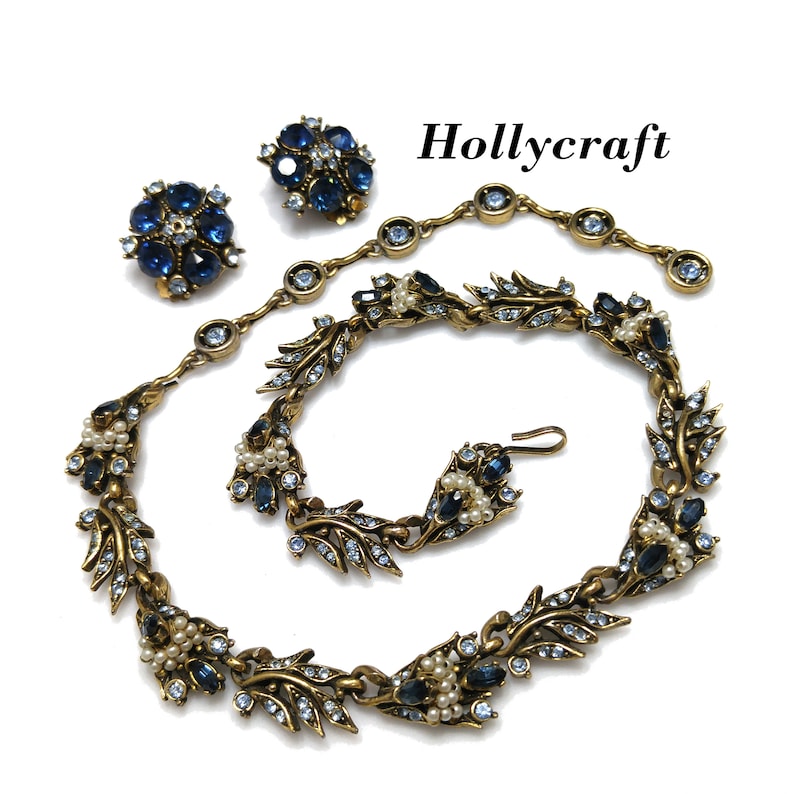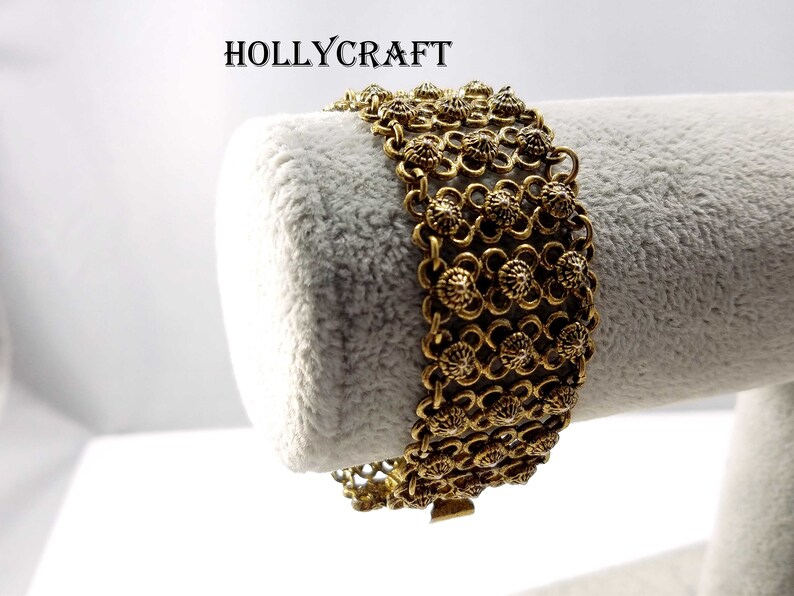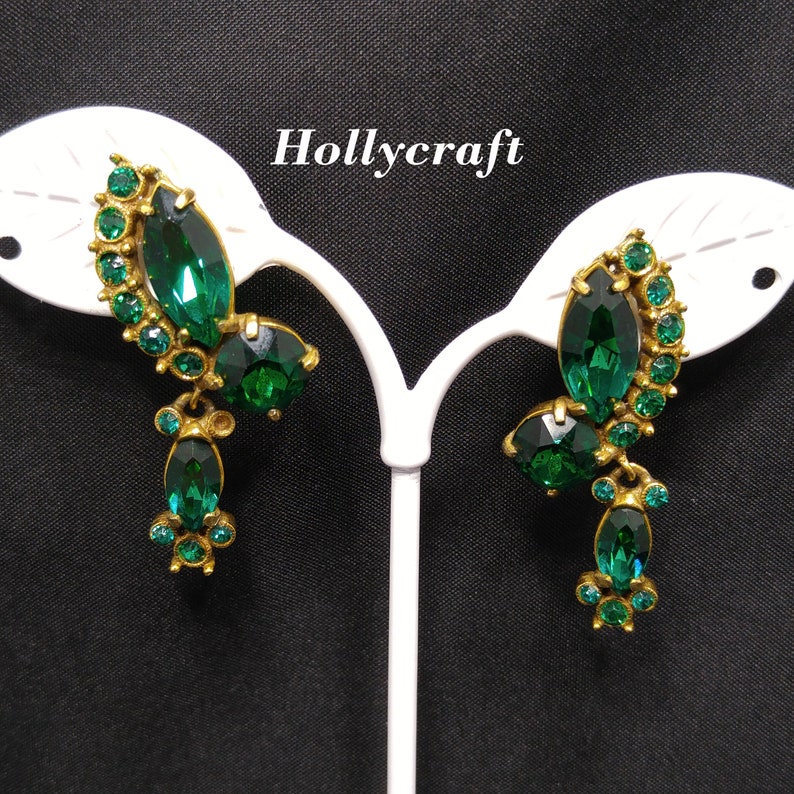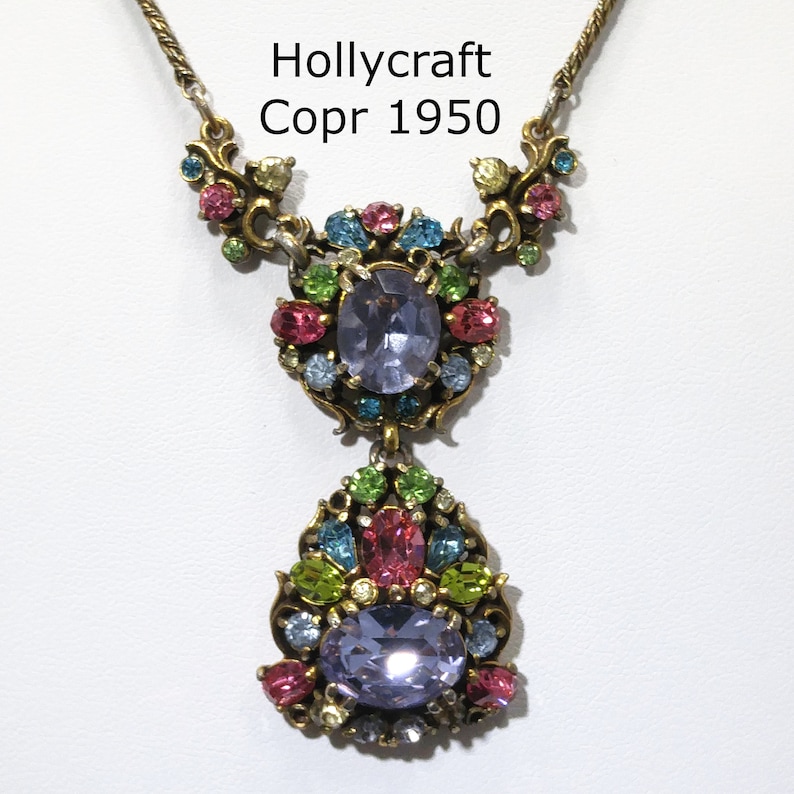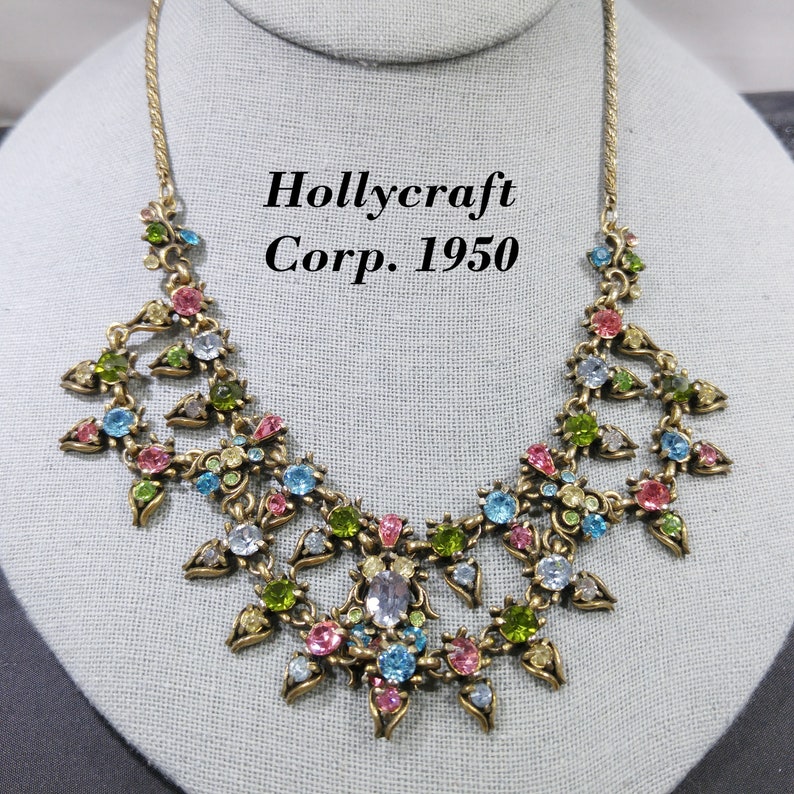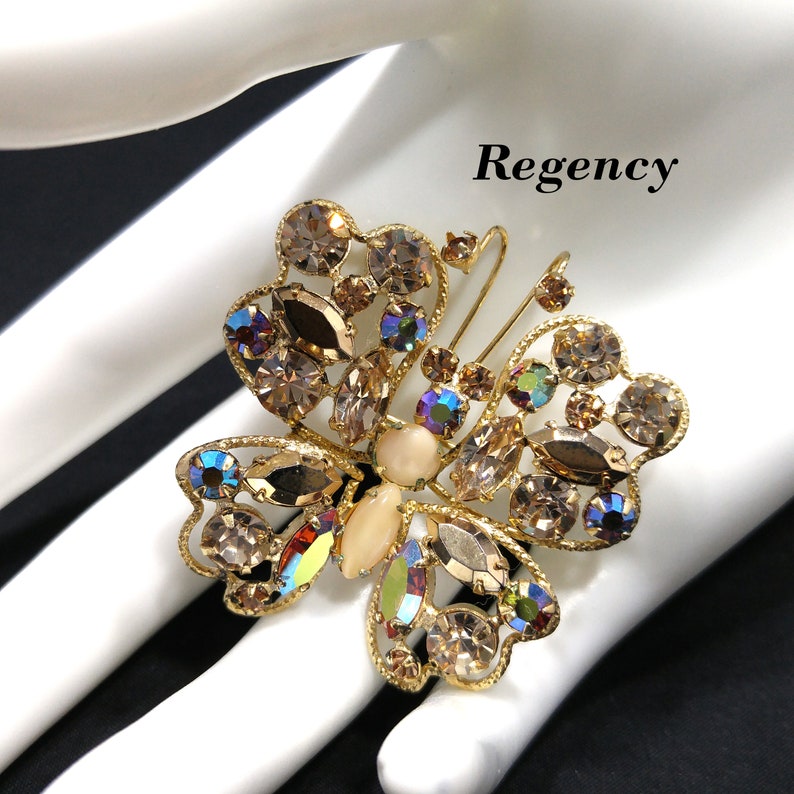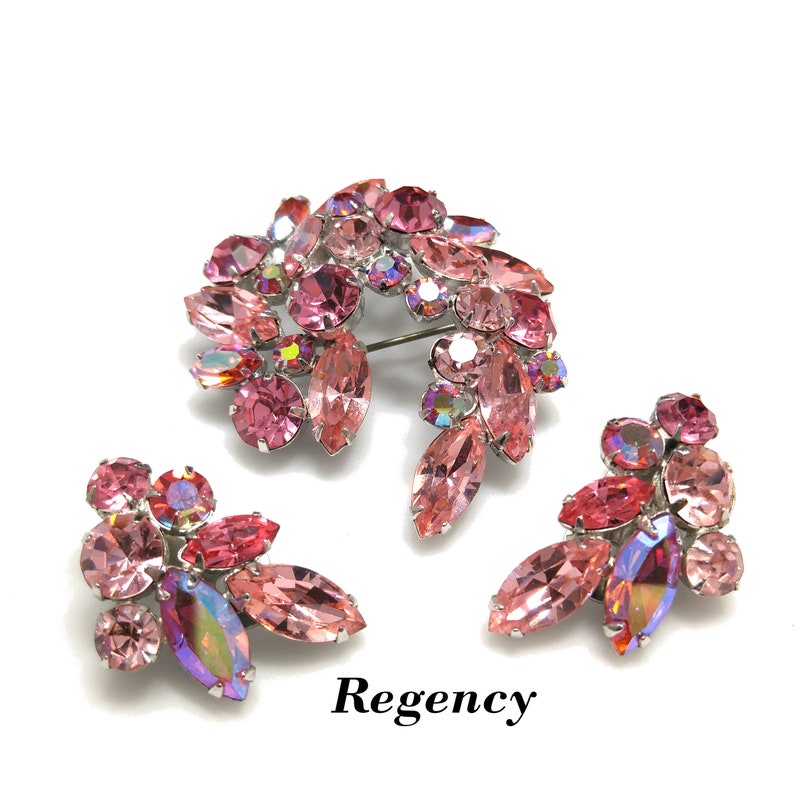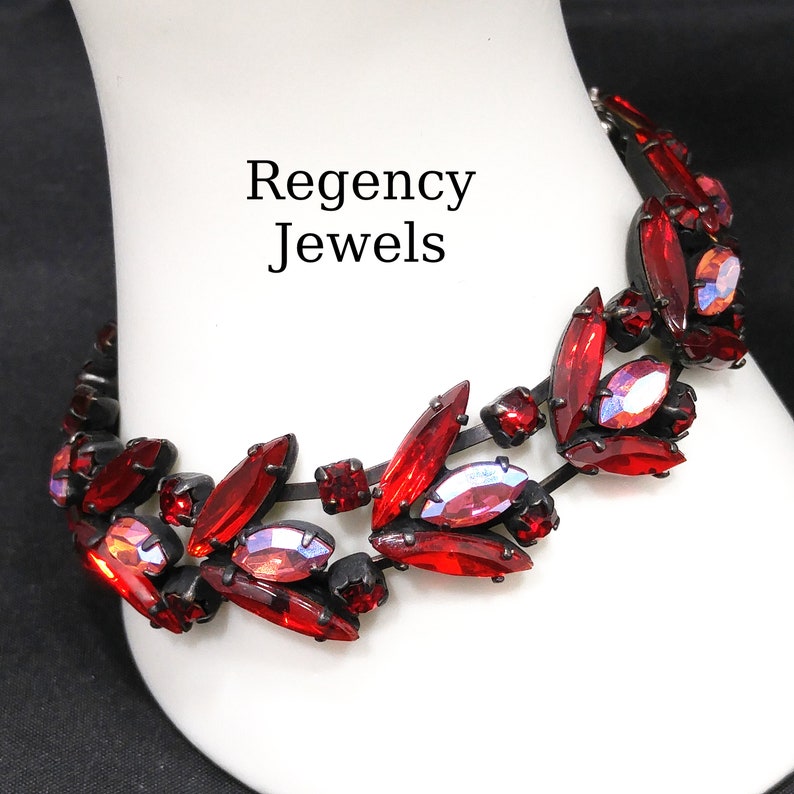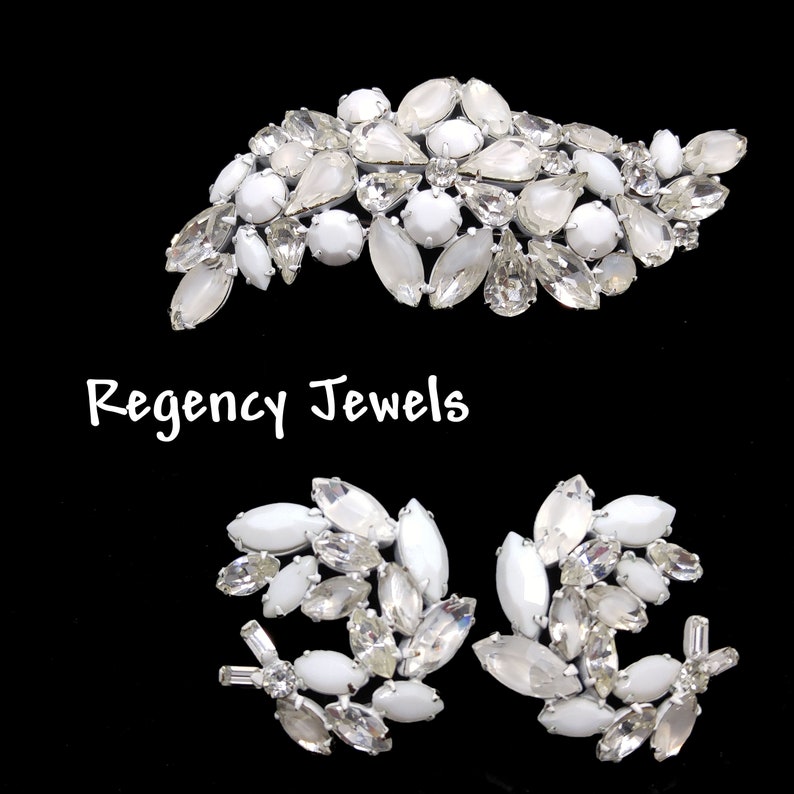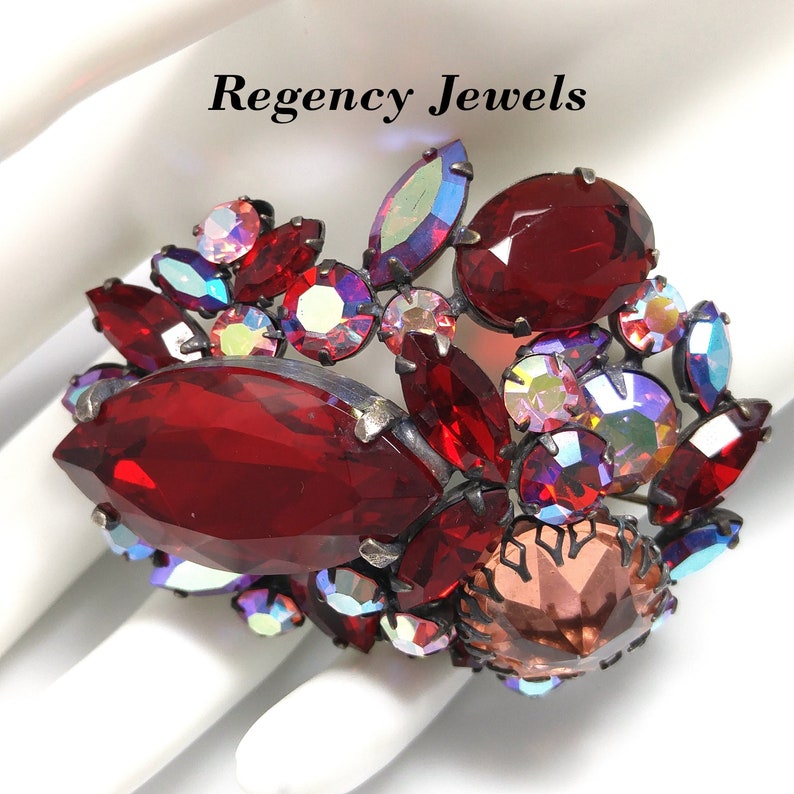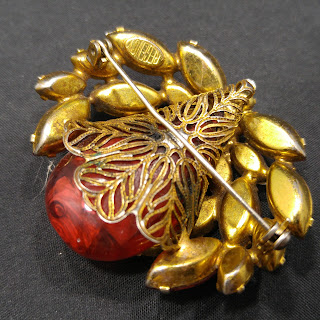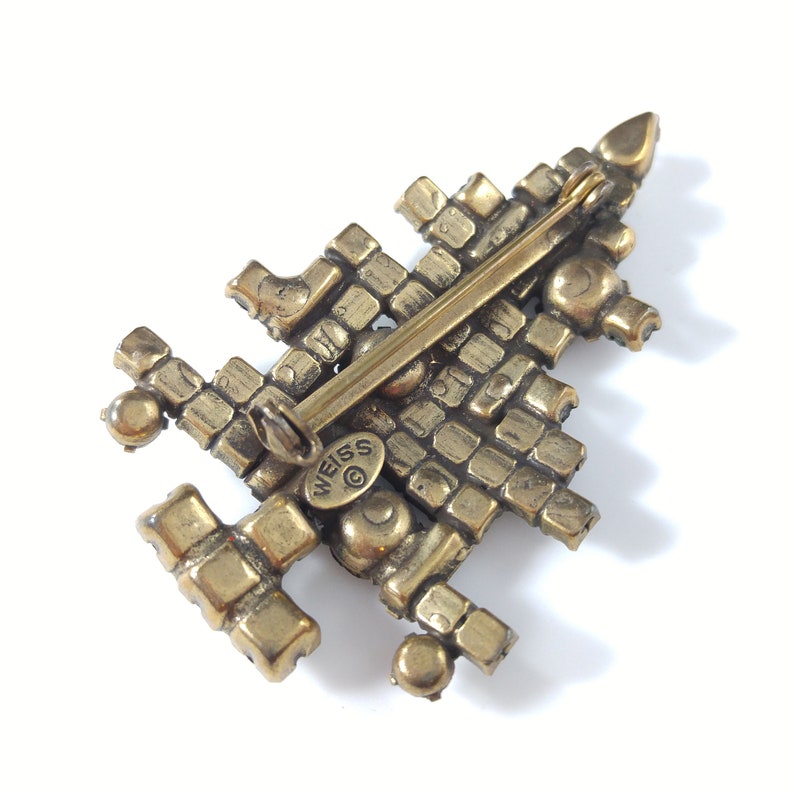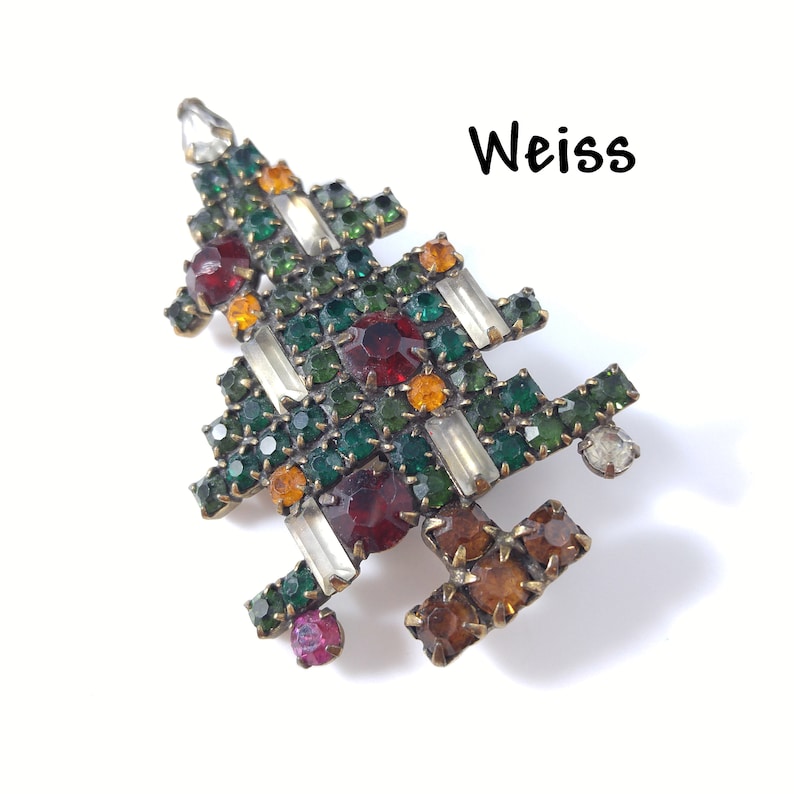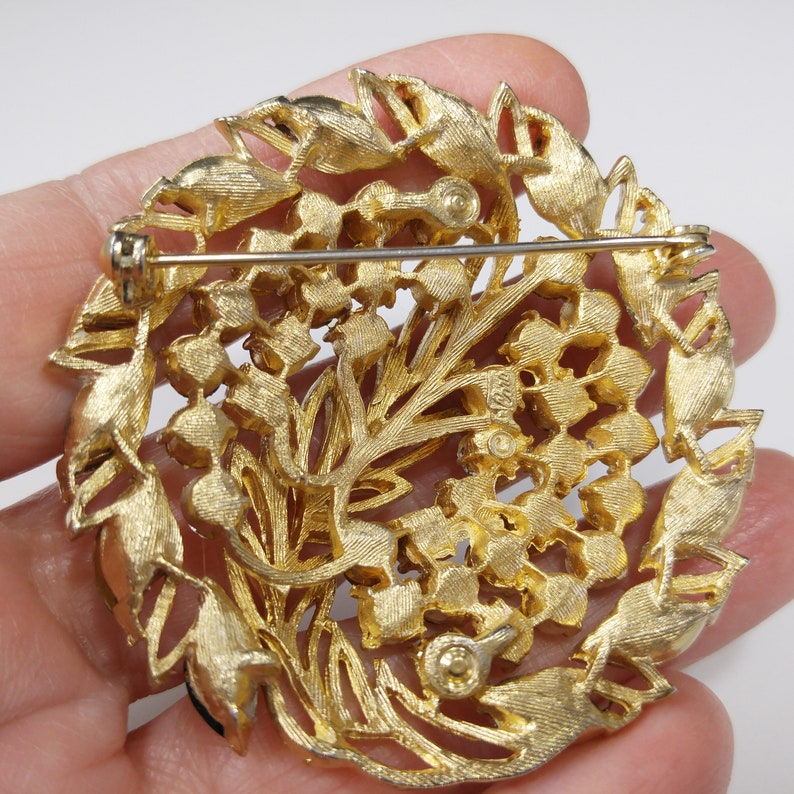Hattie Carnegie was born in 1886 and began marketing jewelry in 1939 to coordinate with her fashions. Many talented artists, under her direction, designed Carnegie jewelry. In addition to themed collections, she made many beautiful more traditionally styled jewelry pieces featuring beautiful rhinestones. Hattie Carnegie died in 1956 but her company continued making jewelry until around 1979. The most common found mark is “Hattie Carnegie” in script on a cartouche.
According to Pamela Y. Wiggins, in Warman's Costume Jewelry, a number of companies including DeLizza & Elster made jewelry marked with the Hattie Carnegie oval cartouche.
Here are a few examples from our collection:
The above necklace is from the same design group as the brooch below. The necklace has art glass stones in green and the brooch below has art glass stones in pink. Both equally beautiful.
Julia C Carroll, from Costume Jewelry 101, describes the stones like this: The stones look like dollops of pink ice cream embedded in faceted clear glass. Each pink stone is accented with x's of gold wire and small clear rhinestones in a "Hugs and Kisses" style.
This necklace is another example of the beautiful design and quality of a Hattie Carnegie necklace.
********
According to Julia C. Carroll in Costume Jewelry 303, the Hattie Carnegie Company selected jewelry designed and produced by various manufacturers to be sold under the Carnegie name. Two designers shared were: Daniel Kasoff of Florenza, Kenneth J. Lane.
